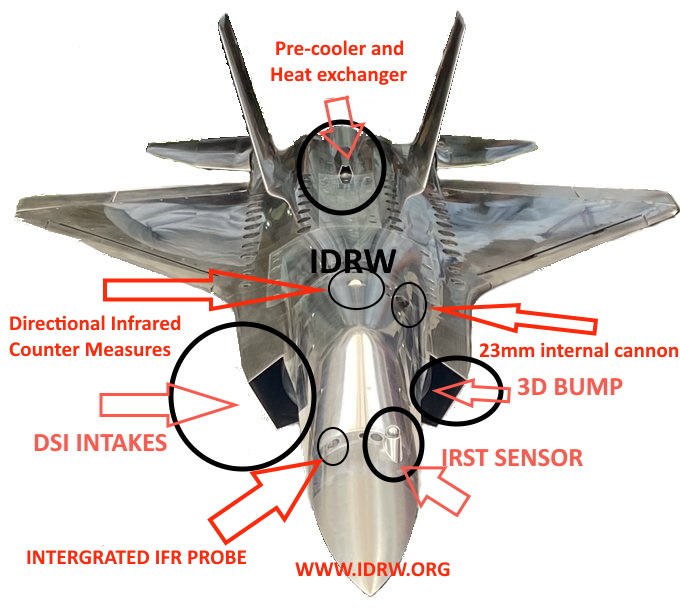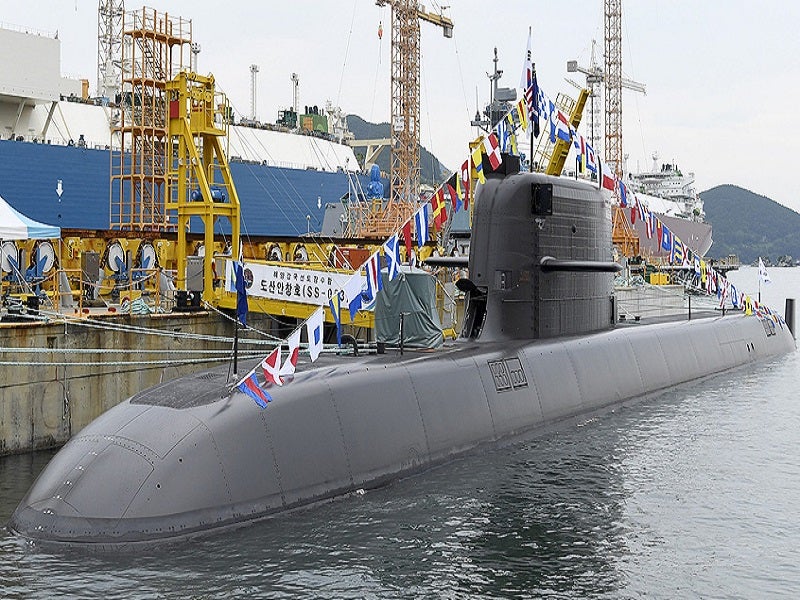SOURCE: RAUNAK KUNDE / NEWS BEAT / IDRW.ORG

In a significant development, the Indian Air Force (IAF) and the Indian Army have initiated the exchange of BrahMos Crew between their ranks of Captain and Major rank officers. This exchange program aims to train these officers to operate each other’s BrahMos Cruise missile Batteries, laying the foundation for their collaboration under the upcoming Integrated Rocket Force (IRF). The IRF is planned to be equipped with a range of missiles including BrahMos, Pinaka, Pralay, and sub-sonic cruise missiles.
The establishment of the Integrated Rocket Force will involve the transfer of responsibility for the existing BrahMos Missile regiments, which currently operate the supersonic cruise missile. This force is expected to be a tri-service organization, bringing together the expertise and capabilities of the Indian Air Force, Indian Army, and Indian Navy. The objective behind the creation of the IRF is to develop a specialized force dedicated to non-contact conventional warfare.
Continue readingSOURCE: RAUNAK KUNDE / NEWS BEAT / IDRW.ORG.

The current designs of India’s fifth-generation AMCA (Advanced Medium Combat Aircraft) fighter jet suggest the inclusion of an internal cannon. However, the necessity of having a gun on every jet and its relevance in dogfighting scenarios are being carefully examined.
According to sources familiar with the matter, told idrw that the impact of the internal cannon on the aircraft’s performance will be thoroughly studied before deciding on its inclusion in the final production variant. This cautious approach is due to the concerns raised by various stealth programs worldwide, which have opted to exclude cannons to avoid potential damage to the fuselage, which often affects the aircraft’s stealth characteristics unless the damage is repaired or repainted leading to downtime of the jet.
Continue readingSOURCE: RAUNAK KUNDE / NEWS BEAT / IDRW.ORG.

South Korea has extended an offer to India for its advanced KSS-III Batch-II submarine, presenting a potential procurement opportunity. The KSS-III Batch-II represents a significant advancement over its predecessor, incorporating enhancements in combat management systems, sonar capabilities, and firepower.
This offer arrives at a time when Germany is also competing for India’s submarine acquisition program, known as Project-75I. The KSS-III Batch-II’s improved features, including an increased number of Vertical Launching System (VLS) cells, offer enhanced operational capabilities, particularly with Submarine Launched Cruise Missiles (SLCMs).
South Korea’s emphasis on domestically developed and sourced components in the KSS-III Batch II submarine presents several advantages for Export customers like India since it enhances the submarine’s operational reliability by reducing potential vulnerabilities associated with relying on foreign suppliers.
KSS-III, a 3,000-tonne class of submarine is the lone bid in Project-75I that meets all the technical requirements set by the Indian Navy but Germany is trying to secure a deal through a Government to Government (G2G ) contract since Germany has issues with liability clauses in the Project-75I tender.
NOTE : Article cannot be reproduced without written permission of idrw.org in any form even for YouTube Videos to avoid Copy right strikes
SOURCE: RAUNAK KUNDE / NEWS BEAT / IDRW.ORG.

A Bangalore-based drone startup has made a groundbreaking announcement, unveiling the development of a swarm of drones with autonomous capabilities for forest penetration. These innovative drones, equipped with GPS-denied abilities, are set to revolutionize complex military and civilian missions.
Acting as pathfinders and scouts, they will play a crucial role in tasks such as counter-insurgency operations (COIN), humanitarian assistance, and disaster relief (HADR). These advanced agents merge cutting-edge localization, AI-based navigation, cooperative mission autonomy, object detection, and sense/avoid techniques.
Continue readingSOURCE: RAUNAK KUNDE / NEWS BEAT / IDRW.ORG.
Hindustan Aeronautics Limited (HAL) recently inaugurated a new production facility in Nashik, aimed at bolstering the manufacturing capacity of the indigenous Light Combat Aircraft Tejas. While HAL already has two manufacturing facilities for LCA Tejas in Bengaluru, with a combined capacity of 16 jets per year, the Nasik facility is expected to further augment the production with an additional capacity of up to 24 jets annually.
However, according to sources at idrw, the Nasik facility is not yet ready to commence production of LCA-Tejas Mk1A jets. The staff at the facility are currently undergoing training, and the procurement of necessary equipment for the assembly of LCA-Tejas is still underway. HAL officials have confirmed that the Nasik facility has the potential to accommodate the production of more than 8 jets, but achieving this installed capacity is contingent upon securing a fresh contract for the Tejas.
Continue readingSOURCE: RAUNAK KUNDE / NEWS BEAT / IDRW.ORG.

The Indian Navy Chief recently confirmed that the Second Vikrant-class aircraft carrier, IAC-II, will undergo minor redesigns to enable the seamless operation of MALE/HALE Unmanned Aerial Vehicles (UAVs) and unmanned combat air vehicles (UCAVs). The Indian Navy’s Warship Design Bureau is already actively involved in this endeavour.
According to sources at idrw, individuals familiar with the matter have affirmed that IAC-II will feature Dedicated Ground Control Stations (GCS) to facilitate drone pilots, along with other essential sensors and satellite terminals for long-range connectivity.
Continue readingSOURCE: RAUNAK KUNDE / NEWS BEAT / IDRW.ORG.

Hindustan Aeronautics Limited (HAL) is eagerly awaiting a sanction order from the Indian Navy to commence the development of a new Utility Helicopter (Marine) based on the Advanced Light Helicopter Dhruv. This initiative aims to fulfil the warship requirements of the Indian Navy, with a projected demand of 50 units. HAL estimates a development timeframe of 2-3 years for the UH Marine.
The upcoming UH Marine helicopter will incorporate foldable rotor technology, which has been successfully demonstrated to the Indian Navy. This feature, combined with other modifications, will enable the helicopters to carry out reconnaissance, surveillance, and other essential operations as per the fleet’s requirements.
Continue readingSOURCE: RAUNAK KUNDE / NEWS BEAT / IDRW.ORG.

German Defense Minister Boris Pistorius is scheduled to visit India next month, during which he will present detailed proposed plans for the sale of six next-generation electric-diesel submarines. The deal, valued at 50,000 crores, will be conducted under a Government-to-Government (G2G) arrangement if cleared by India.
India’s procurement plans for the six next-generation electric-diesel submarines, part of Project-75I (India), have encountered obstacles due to a single vendor situation. Currently, the only standing offer is from Korea, with its KSS-III submarine, also known as the Dosan Ahn Changho-class submarine. Germany declined to bid for the project due to concerns related to liabilities clauses but offered a separate G2G deal for submarines earlier this year.
Continue readingSOURCE: RAUNAK KUNDE / NEWS BEAT / IDRW.ORG.

India’s BrahMos Aerospace has initiated discussions with the Russian side to secure the Transfer of Technology (ToT) for the liquid-fueled ramjet sustainer motor used in the Indo-Russian BrahMos Supersonic cruise missile. The objective is to enable local assembly of the motor within the country.
While India already manufactures the indigenous solid propellant boost motor for the BrahMos along with many other systems that has put 78% indigenous system in each BrahMos missile , the liquid-fueled ramjet sustainer motor is currently sourced from Russia. However, due to ongoing economic and military sanctions imposed on Russia, procuring weapons and spares for Russian-origin systems has become challenging. To mitigate this dependency and ensure a reliable supply chain, BrahMos Aerospace aims to localize the production of the ramjet sustainer motor.
Continue readingSOURCE: RAUNAK KUNDE / NEWS BEAT / IDRW.ORG.

According to recent media reports, the indigenous Quick Reaction Surface to Air Missile (QRSAM) developed by the Defence Research and Development Organisation (DRDO) is set to undergo its final round of user trials next month. The successful completion of these trials will mark the conclusion of both the developmental phase and the user phase of the project.
Earlier this year, in an interview with CNBC TV, Cmde Siddharth Mishra (Retd), Chairman & Managing Director of Bharat Dynamics Limited (BDL), confirmed that the Indian Army would conduct further user trials of the DRDO-developed Quick Reaction Surface-to-Air Missile (QRSAM) later in the year. These trials are expected to continue until the end of the year, with the company anticipating orders from the Indian Army by the end of 2024.
Continue readingSOURCE: RAUNAK KUNDE / NEWS BEAT / IDRW.ORG.
The Indian Army has undertaken a significant revision of the parameters for the upcoming Future Ready Combat Vehicle (FRCV) tank, which is slated for local manufacturing starting in 2030. This revision comes as a response to the evolving threat landscape and takes into account the new level of challenges observed during the Russia-Ukraine war. As a result, the FRCV has shifted towards a heavier-weight 55-57ton tank configuration, signifying a substantial change in tank design and capabilities.
The lessons learned from recent conflicts have underscored the importance of enhanced protection and firepower capabilities for modern tanks. The Russia-Ukraine war, in particular, has provided valuable insights into the nature of contemporary warfare and the threats faced by armoured vehicles on the battlefield. The Indian Army has recognized the need to adapt to these evolving challenges and has consequently adjusted the parameters of the FRCV to meet the new requirements.
Continue readingSOURCE: RAUNAK KUNDE / NEWS BEAT / IDRW.ORG.

The Indian Navy’s sixth and final Kalvari-class submarine, Vaghsheer, has embarked on its crucial sea trials. This significant milestone marks an important step in the Indian Navy’s quest to enhance its maritime capabilities. Looking ahead, the Indian Navy has proposed the procurement of three additional Kalvari-class submarines with a greater emphasis on indigenous content. These submarines will be manufactured by the State-owned Mazagon Docks Ltd (MDL), the same entity that produced the previous six submarines under license from the renowned French Naval Group.
While the prospect of acquiring more indigenous submarines is promising, the follow-up order does come with a potential cost increase. Considering inflation and various other factors, it is estimated that the cost of each submarine in the follow-up order may experience a significant 46 per cent surge. This cost adjustment reflects the evolving economic landscape and the intricacies involved in the production of advanced naval vessels.
Continue readingSOURCE: RAUNAK KUNDE / NEWS BEAT / IDRW.ORG.

As per a report in Jane’s Defence News, Mazagon Dock Shipbuilders Limited (MDL), a leading Indian shipyard, revealed its state-of-the-art Mine Countermeasures (MCM) Swarm System during the Lima 2023 defence exhibition.
In a coordinated swarm configuration, the Autonomous Underwater Vehicles (AUVs) will consist of three integral units. Serving as the central hub, the first AUV will assume the role of the master, while the other two will function as slaved systems.
Continue readingSOURCE: RAUNAK KUNDE / NEWS BEAT / IDRW.ORG.

General Electric (GE) has presented a proposal to India, offering a derivative of their F414 engine with a thrust of 116 kN as a baseline for the development of a new F414 variant. This engine variant is intended to power India’s fifth-generation Advanced Medium Combat Aircraft (AMCA) and is designed with the crucial objectives of achieving supercruise capabilities and reducing thermal signature.
According to GE officials, the company has already developed a technological concept for upgrading the present 98 kN thrust F414 engines to achieve a 1% improvement in fuel consumption, thereby enabling the thrust enhancement to 116 kN. However, considering that further thrust enhancements will be required, GE has extended an offer to India to utilize their ceramic matrix composite engine core parts, which require 20% less cooling air.
Continue readingSOURCE: RAUNAK KUNDE / NEWS BEAT / IDRW.ORG.

India and the United States are currently engaged in discussions regarding the development of a next-generation, long-range family of artillery precision-guided projectiles. The aim is to create munitions with enhanced lethality capable of defeating long-range targets. Both countries are exploring the possibility of developing multiple families of artillery projectiles that can be seamlessly used with existing 155mm artillery guns, requiring no modifications.
While specific details about the program have not been disclosed yet, concepts such as cannon-launched precision-guided munitions (PGMs) and Extended Range Hypervelocity Projectiles (HVP-ER) are being considered for potential joint ventures and subsequent production.
Continue reading